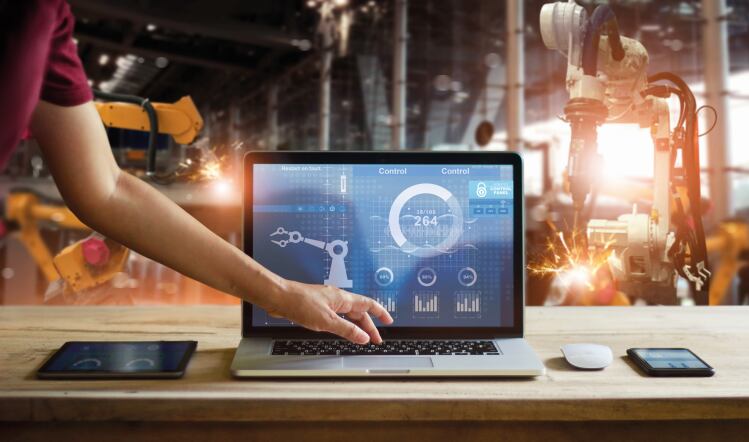The Mobile Cleaning Device 4.0 (MCD) is available in two variants. One travels down the production line on a conveyor belt, cleaning equipment from the inside; the other cleans the floor, ceilings, walls and the outer surfaces of machines.
Controlled via wi-fi, the battery-powered robot moves autonomously with nothing but a hose for the cleaning agent connecting to the docking station.
A multi-sensor system for harsh environments has been installed in the MCD. Using a method called fluorosensing, the robot can detect and adapt to contaminations on the production line. These advanced sensors, paired with artificial intelligence, enable this adaptive cleaning.
Advanced sensors
Commenting on the system, Dresden branch lab for processing technology team leader Max Hesse said: “A detector uses UV light to identify fluorescent particles such as fats, oils and proteins, and doses the foam and water according to the determined parameters, such as the layer thickness and dryness of the residue.
“This is to be accomplished by a self-learning AI system that selects the suitable cleaning parameters and specifies the process steps.”
The data is then fed into a simulation of the factory, creating a digital twin from which the MCD can use to map out its cleaning cycle.
“The virtual twin serves to map the detected fouling to a 3D model of the plant,” Hesse added. “The water pressure can then be adjusted and reduced, depending on the distance between the device and the surface – all in the interest of using resources efficiently.”
Virtual twin
Fraunhofer’s MCD also monitors the process on the fly to make sure the cleaning is being done properly. In the next step, it sends the results of its check to the virtual twin with the self-learning capability. This way, the system improves itself with each pass to achieve excellent results while sparing resources.
The results are then documented, ensuring the procedure is highly reproducible.
Another major benefit of the system was the number of man hours that could be saved by employing its use in the factory, said Hesse, who is a professional engineer. “Our automated system really shines when staff is in short supply. Around 10% of employees in food production are tasked exclusively with cleaning.”
This in turn freed up skilled workers to work on more important tasks, at a time when the availability of such workers had noticeably diminished, he said.
Meanwhile, food safety and hygiene concerns regarding the use of wearable gadgets (‘wearables’) in production environments are slowly diminishing, clearing the way to realise the potential of such technologies.





